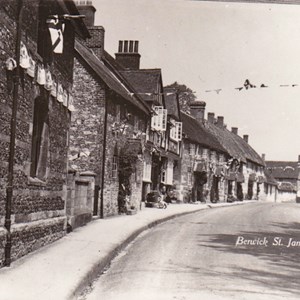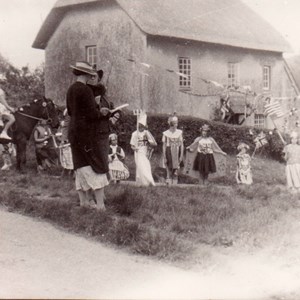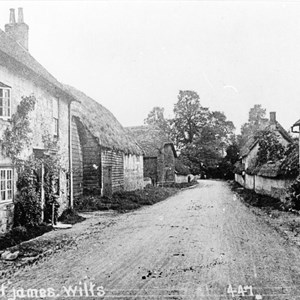History
To make navigation around this website easier, we have seperated it into various sections. Just click on the buttons on the left to find your way to a section which might be of interest to you. If you are trying to find out about the history of a particular house, simply click on Village Houses where you will find a long list of houses. The landowners section gives you loads of information about various landowners. If you just want to see what the village looked like 130 years ago simply click on Historical Pictures.
In January 2012 we added a 'Memories' section which will capture people's personal recollections of living in Berwick
We also now have a section for appeals for information where people have requested more information. Just click on the link on the left.
In 1999 Dick Last marked the millenium by taking pictures of Villagers outside their homes - visit the millenium book page
A survey of the Manor of Berwick St James in 1591 described it ..
“It standeth north from Salisburie the village whereof standeth somewhat lowe, with a river on the south east part thereof, yealding a verie good Trowte etc; the arable lande wherof is not verie fertile, but reasonable apte for corne and graine, with reasonable good shepe slightes but noe great store of meadowe within the same.”
It hasn’t changed much! Berwick St James Parish is now about 4 miles long from beyond Yarnbury Castle in the west, nearly as far as Stonehenge in the east. North – south it is barely one mile wide.
The parish is made up of two “villages”, Berwick itself on the west of the river Till, and Asserton on the east. Originally these were separate parishes, each with meadow in the river valley, and arable and downs stretching up onto the hills to each side. Both names are Saxon in origin, Asserton being “Aeschere’s farm” and Berwick an outlying farm growing grain.
In the Domesday book Berwick’s entry reads; Ernulf of Hesdin, Winterburne 179 Nubold holds Berwick St James of Ernulf. Eadric held it TRE [tempore Regis Edwardi – in the time of King Edward – before 1066], and it paid geld for 1 hide and 2 ½ virgates of land. There is land for 1 plough, which is there with 2 slaves, and 8 acres of pasture. It was worth 20s [before 1066] now 40s.
The “St James” was added by 1191 – “Berewyk Sancti Jacobi”. St James was a saint popularised in England by Queen Matilda who, in the 12th century, fought and lost a civil war against King Stephen; much of the West Country was on her side.
Berwick has not changed much in size in the last few hundred years, from the present approximately 70 houses, but Asserton is now only a few houses. In 1309 Asserton had its own watermill, dovecote, gardens and at least 15 tenants obligated to do various “works” for their Lord. There are traces of cottagers’ gardens and houses on the hill to the side of the present Asserton House. The chapel to St Mary Magdalene was attached to Asserton House from early times but in 1547 the chalice and vestments were sold and the incumbent was a layman, Gyles Thesethwayte. Finally, in 1654, the chapel was “ruinated and of noe use” and Asserton parish was combined with that of Berwick.
The landowning history of Berwick and Asserton is surprisingly complicated. I will shortly put the details elsewhere in this website!
Berwick was privately owned, passed into the Duchy of Lancaster in 1307 (and therefore to the Crown) for a while. Then from 1600 to the present day in private ownership. The first time the main landowner lived in the village was in 1898 when Mr Stephen Furness moved to Berwick House.
Nicky Street



